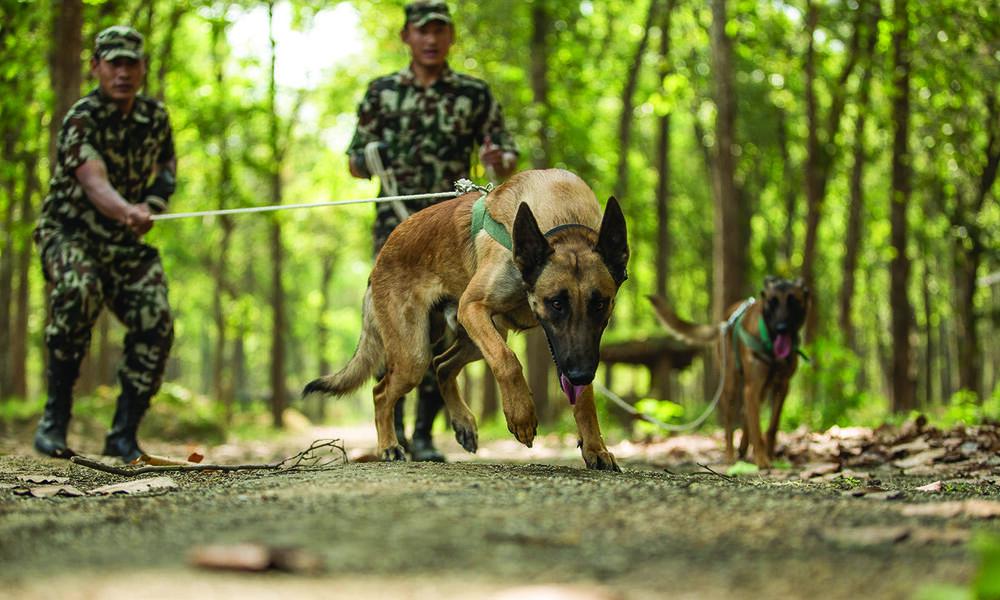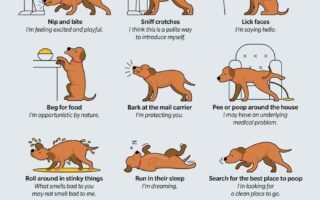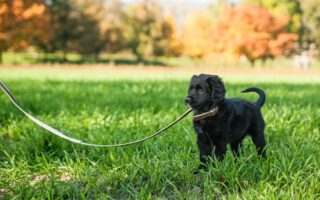In a world where scent is a silent language, the remarkable abilities of sniffer dogs take center stage, transforming the way we perceive security, search and rescue, and even crime detection. These furry detectives, equipped with an extraordinary olfactory system that far surpasses human capabilities, play pivotal roles in a variety of fields, from law enforcement to medical diagnostics. However, behind their impressive skills lies a rigorous and meticulously structured training process, where instinct meets discipline. This article delves into the fascinating realm of sniffer dog training, exploring the techniques, challenges, and rewards involved in shaping a pup into a proficient scent detector. Join us as we uncover the dedication and expertise that breathe life into this unique partnership between humans and their canine companions.
Table of Contents
- Understanding the Science Behind Sniffer Dog Abilities
- Essential Training Techniques for Effective Detection Skills
- Building a Strong Bond with Your Sniffer Dog
- Common Challenges and Solutions in Sniffer Dog Training
- Q&A
- To Conclude
Understanding the Science Behind Sniffer Dog Abilities
At the heart of a sniffer dog’s remarkable abilities lies their extraordinary sense of smell, which is estimated to be between 10,000 to 100,000 times more sensitive than that of humans. Their olfactory system is not only equipped with a larger number of scent receptors but also features a highly developed olfactory bulb that processes smells. This enhanced capability allows them to detect specific scents even in cluttered or overwhelming environments. Key components of their olfactory prowess include:
- Receptors: Dogs have about 300 million scent receptors compared to a human’s 5 million.
- Vomeronasal organ: This organ helps them smell pheromones, providing insights into the behaviors of other animals.
- Adaptability: Dogs can be trained to identify a wide range of scents, from drugs to explosives, by associating specific smells with rewards.
The training process enhances their innate abilities, fine-tuning their skills through repetition and positive reinforcement. Various techniques are employed to help dogs understand complex scent profiles, enabling them to differentiate between similar aromas. For instance, scent discrimination training is crucial, allowing dogs to focus on target odors amidst distracting stimuli. A brief overview of the training stages can include:
| Training Stage | Description |
|---|---|
| Familiarization | Introduce the dog to basic scents in controlled environments. |
| Scent Association | Link target scents to rewards, reinforcing detection behaviors. |
| Field Work | Practice in real-world scenarios to enhance focus and endurance. |
Essential Training Techniques for Effective Detection Skills
Training a sniffer dog requires a blend of technique, patience, and an understanding of canine behavior. One of the foundational techniques is positive reinforcement, where desirable behavior is rewarded, reinforcing the dog’s eagerness to work. This can include treats, praise, or playtime. When introducing the scent detection process, it’s crucial to create an enjoyable association with the target scent. Incorporating games that involve hiding scents can help the dog build a mental connection between the task and the reward. Engaging in such activities not only enhances their detection skills but also strengthens the bond between the handler and the dog.
Another essential aspect of training is controlled exposure to various environments and stimuli. Example scenarios include:
- Increasing exposure to different scents in varied locations
- Utilizing diverse surfaces for tracking
- Acclimatizing to crowds and noise to build confidence
Additionally, socialization plays a vital role in a sniffer dog’s development. Establishing protocols for interaction with other dogs and humans helps ensure that the dog remains focused during operations. Keeping a consistent schedule for training sessions allows for incremental learning, ensuring that both handler and dog can track progress effectively. By focusing on these techniques, trainers can cultivate a well-rounded and proficient detection canine, ready to tackle real-world challenges.
Building a Strong Bond with Your Sniffer Dog
Establishing a deep connection with your working dog is essential for effective sniffer dog training. A strong bond enhances communication, allowing your dog to perform tasks with confidence and reliability. To foster this relationship, consider these key elements:
- Trust Building: Spend quality time together outside of training sessions. Engage in play or simple walks to strengthen your partnership.
- Positive Reinforcement: Use treats and praise generously. Acknowledge your dog’s successes to create a rewarding environment.
- Consistent Commands: Keep your commands clear and consistent. This clarity helps dogs understand expectations and fosters mutual respect.
Another crucial aspect is understanding canine behavior. Recognizing your dog’s signals helps in adjusting training techniques for better outcomes. Here’s a simple guide to common behaviors:
| Behavior | Meaning |
|---|---|
| Tail Wagging | Excitement or happiness |
| Yawning | Calming signal or boredom |
| Paw Lifting | Uncertainty or hesitation |
| Intense Focus | Engagement and readiness to work |
Common Challenges and Solutions in Sniffer Dog Training
Sniffer dog training can present a variety of challenges that require patience and expertise to overcome. One common issue is the dog’s distraction by environmental stimuli. The presence of strong smells, sounds, or sights can easily divert a dog’s attention from its training objectives. To address this, trainers can employ tactics such as controlled exposure, which gradually introduces distractions in a manageable manner. This allows dogs to learn to focus on their tasks despite the surrounding stimuli. Additionally, incorporating positive reinforcement techniques helps in building confidence and motivation, making it easier for the dog to concentrate on their training goals.
Another challenge is ensuring consistent performance in dogs. Dogs, much like humans, can have off days or varying levels of motivation and focus. To mitigate this, trainers can implement a structured training schedule that balances practice with rest periods. It’s essential to keep training sessions short and engaging to maintain the dog’s interest and energy levels. Utilizing a range of training environments—from controlled settings to real-world scenarios—can also help find the right balance. The following table outlines common challenges along with effective solutions:
| Challenge | Solution |
|---|---|
| Distraction by Environment | Controlled exposure and positive reinforcement |
| Inconsistent Performance | Structured schedules and varied training environments |
Q&A
Q&A: The Art and Science of Sniffer Dog Training
Q: What exactly is sniffer dog training?
A: Sniffer dog training involves teaching dogs to detect specific scents using their highly sensitive olfactory systems. These can include drugs, explosives, search and rescue signals, or even agricultural pests. Trainers use positive reinforcement techniques to help dogs associate the target scent with rewards.
Q: How do you select a dog for sniffer training?
A: Not all dogs are suitable for sniffer training. Trainers typically look for breeds with a strong sense of smell, such as German Shepherds, Belgian Malinois, and Bloodhounds. Additionally, traits like high energy, drive, and playfulness are essential, as they keep the dog engaged in the training process.
Q: What techniques are used in sniffer dog training?
A: Several techniques are employed, including scent association, target training, and search exercises. The foundational method is scent association, where the dog learns to associate a particular odor with a reward, such as a treat or playtime. As training progresses, the exercises become more complex, simulating real-life scenarios where the scents need to be detected.
Q: How long does it take to train a sniffer dog?
A: Training duration varies depending on the dog’s breed, age, and the complexity of scents they need to detect. Basic training can take anywhere from a few weeks to several months. However, continual practice and refreshers are important throughout the dog’s career to maintain their skills and ensure accuracy.
Q: Are there any challenges involved in sniffer dog training?
A: Yes, training can present various challenges. Distractions in the environment, like loud noises or unfamiliar scents, can affect a dog’s performance. Additionally, handlers must learn to read their dog’s body language to understand when they are on the correct scent, which can take time and experience.
Q: How important is the bond between trainer and dog?
A: The bond is crucial in sniffer dog training. A strong, trusting relationship leads to a more effective training experience and enhances the dog’s motivation to work. Trainers often invest significant time in establishing this bond through play, consistent communication, and mutual respect.
Q: What role do sniffer dogs play in society?
A: Sniffer dogs are invaluable in various fields, including law enforcement, search and rescue operations, and even medical detection—such as sniffing out certain diseases. Their ability to detect scents that humans cannot makes them essential team members in keeping communities safe.
Q: Can sniffer dogs be retired? If so, what happens to them?
A: Yes, sniffer dogs can retire after several years of service. Upon retirement, dogs are often adopted by their handlers or placed in loving homes. It’s essential to provide these dogs with a comfortable and engaging lifestyle, keeping in mind that they thrive on activity and companionship.
Q: How can someone get involved in sniffer dog training?
A: Getting involved in sniffer dog training can be as simple as attending local training sessions or volunteering with organizations that specialize in this area. Aspiring trainers can also pursue formal education in canine training or behavior, which provides a solid foundation for working with these remarkable animals.
Conclusion: Sniffer dog training is both an art and a science, requiring patience, understanding, and dedication. As these extraordinary animals sift through scents, they not only enhance safety but also deepen the bond between humans and dogs, one sniff at a time.
To Conclude
As we conclude our exploration of sniffer dog training, it’s clear that these remarkable canines are much more than just pets; they are skilled partners in various fields, from law enforcement to search and rescue. The intricate blend of science, patience, and compassion that goes into training these dogs showcases the incredible bond between humans and animals. Each successful scent detection is a testament to the hard work and dedication of both the trainers and the dogs, reflecting an age-old partnership built on trust and intuition.
As we move forward, the evolution of sniffer dog training offers exciting possibilities. Innovations in training techniques and technology promise to enhance their abilities, enabling them to tackle even more complex tasks and challenges. With every new bark and wag of the tail, these dedicated dogs remind us of the powerful impact they have on our lives and the world around us. So, as we continue to witness the evolution of training methods and partnerships, let us celebrate the incredible contributions of sniffer dogs and their trainers, who make our communities safer, more informed, and far more connected.



